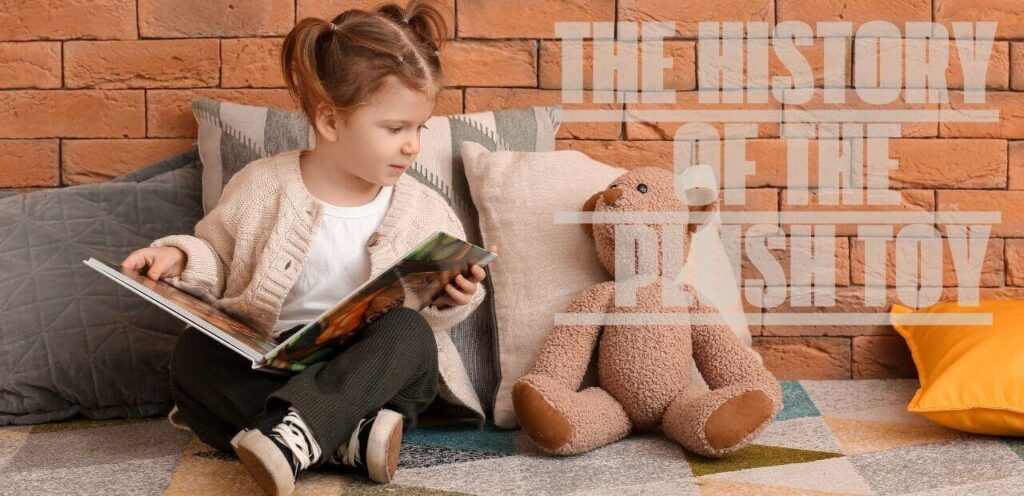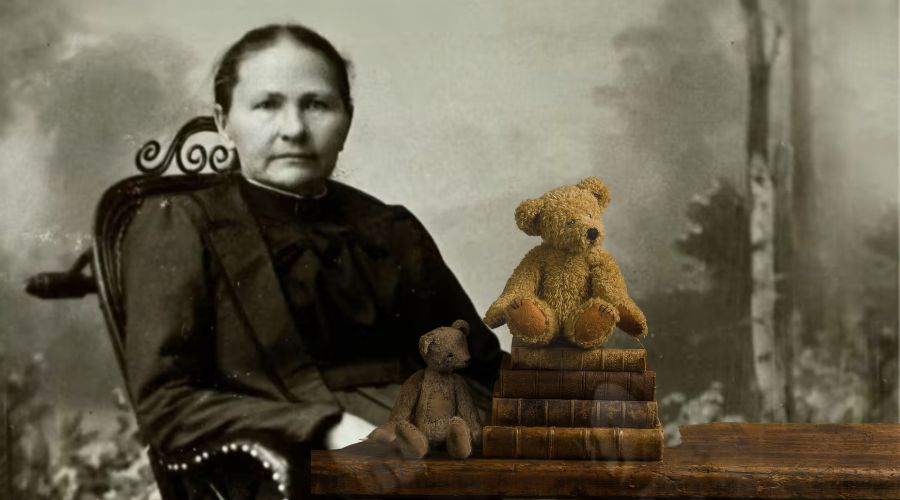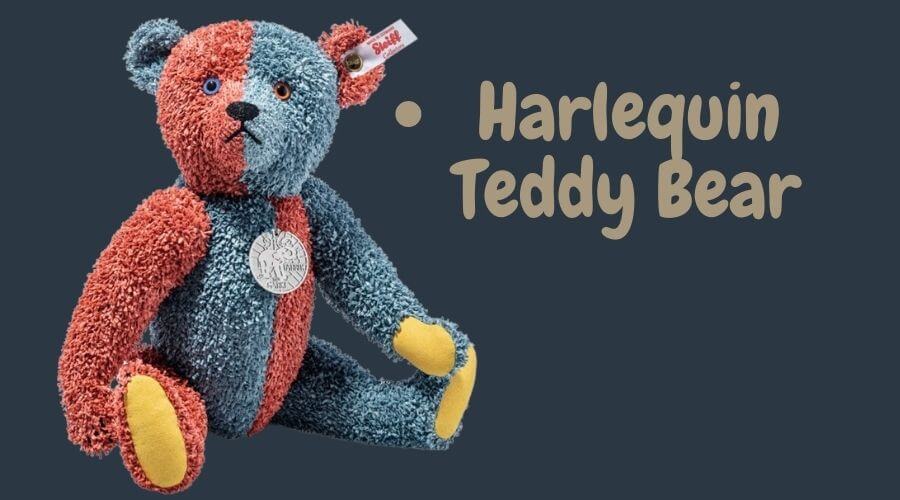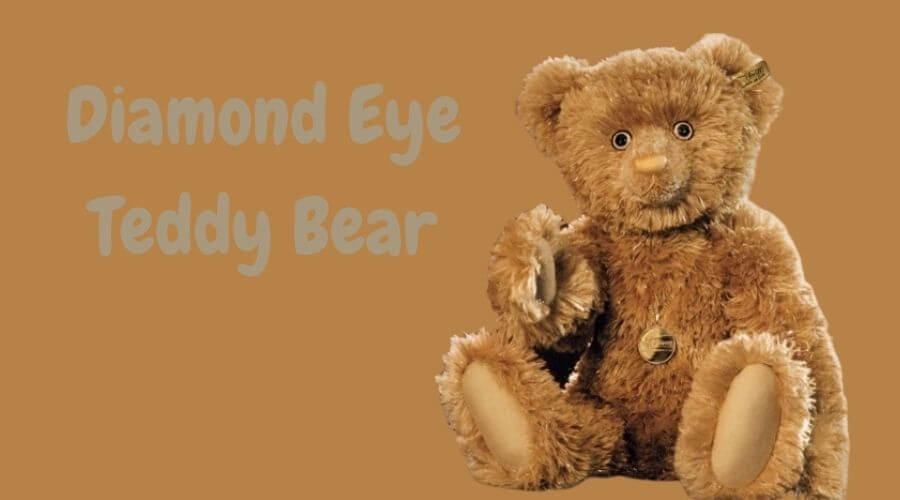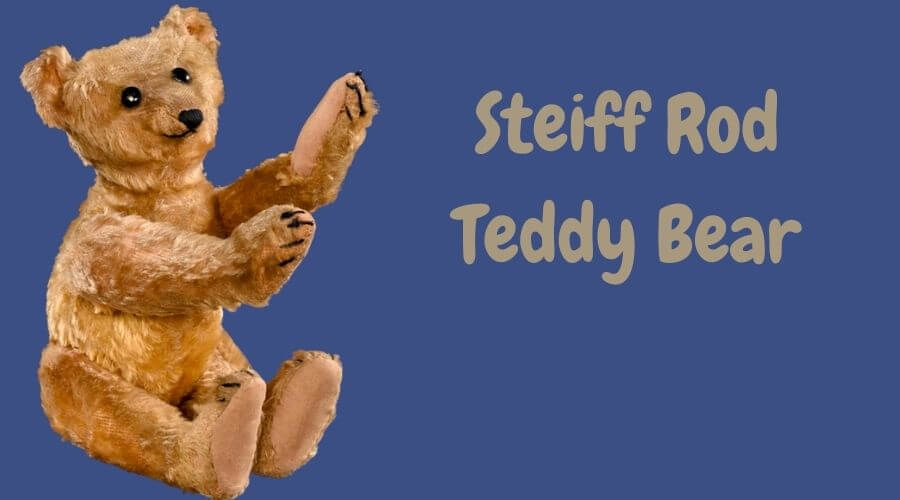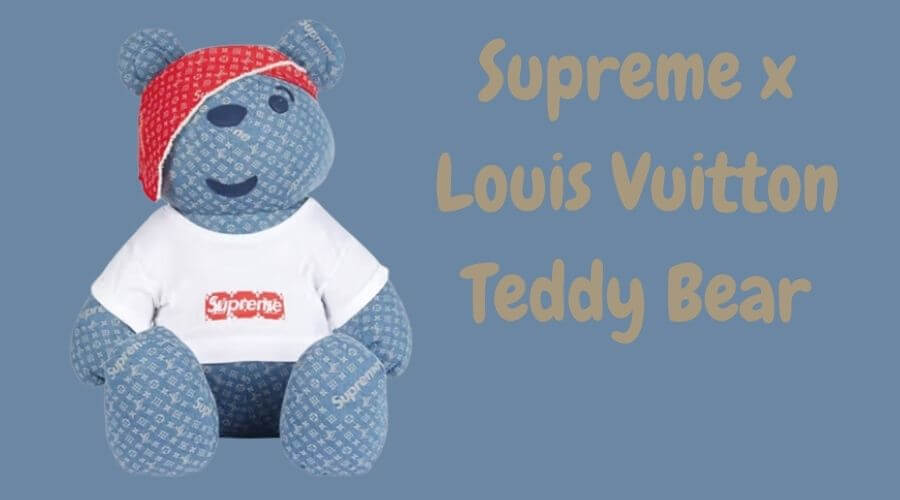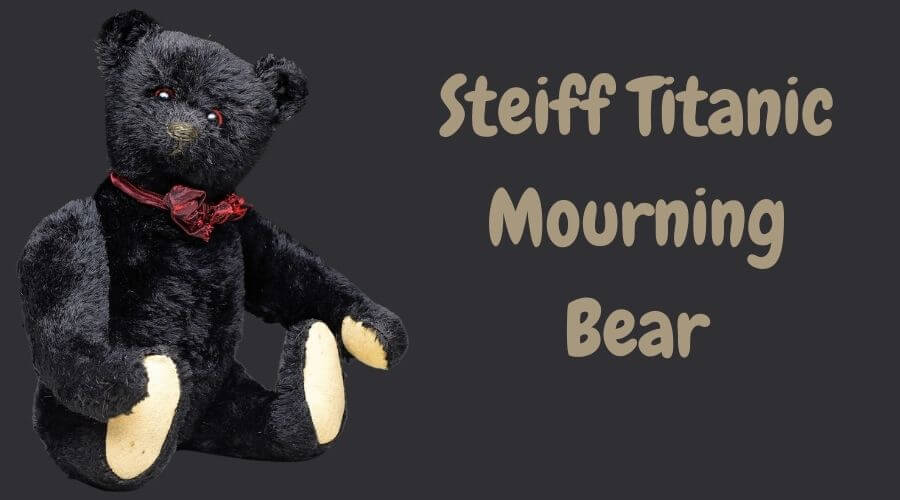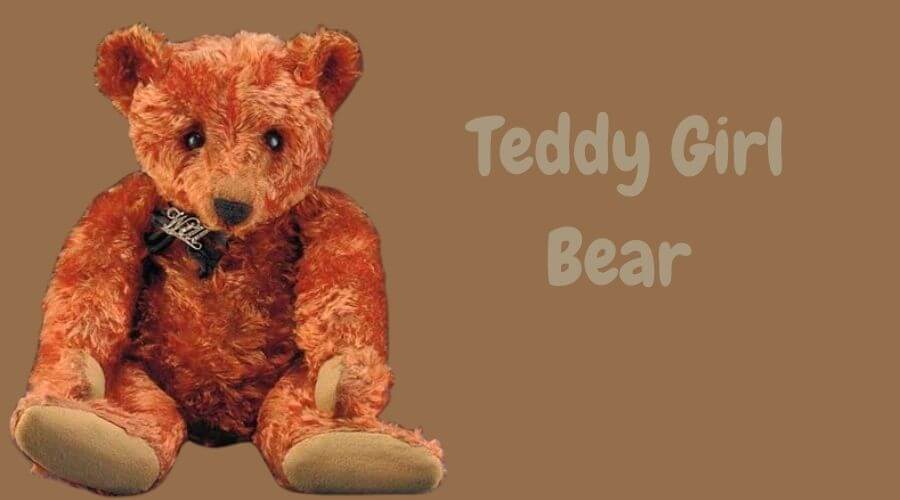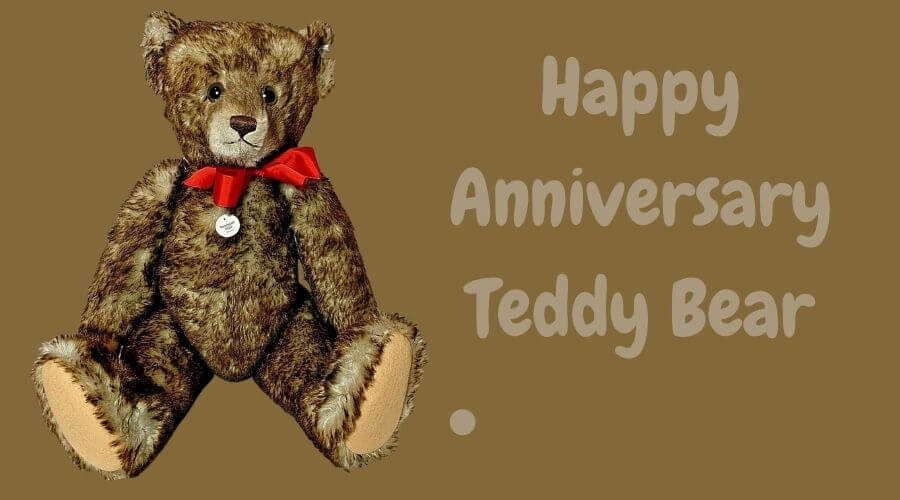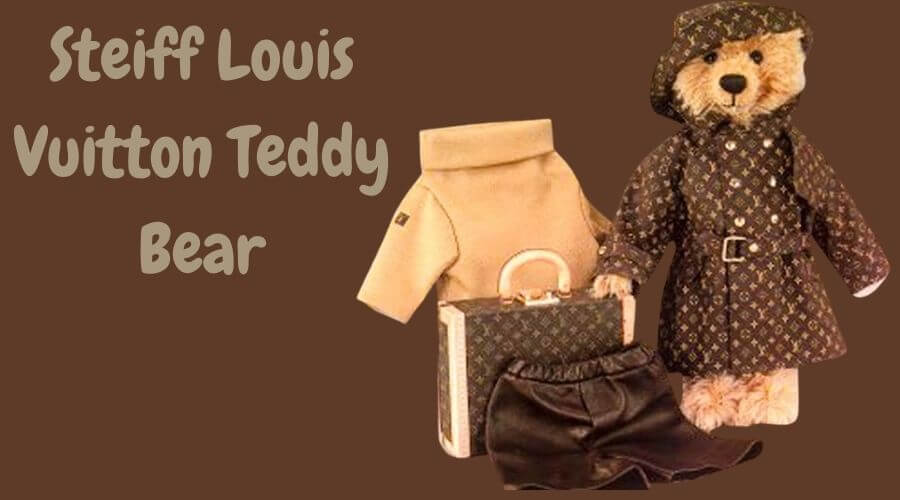Blog
History of Stuffed Animals
The History of stuffed animals is rich and fascinating. For years, children have cherished plush toys, with nearly everyone having a favorite as a child. Their origins vary, from parental creations to commercial ventures. Today, we explore their invention, evolution, and cultural impact!
🧸 The History of Stuffed Animals: From Ragdolls to Modern Plushies
🐻 The Legacy of Margarete Steiff – First Modern Stuffed Animal
Margarete Steiff’s story is one of perseverance and creativity. Born in Germany, she overcame significant challenges to create one of the most iconic stuffed animal brands in history.
🧵 Overcoming Early Life Challenges
As a baby, Margarete contracted polio, which left her legs paralyzed and caused muscle weakness in her right arm. Despite these difficulties, she was determined to follow her passion for sewing. She attended sewing school and, at just 17 years old, completed her training as a seamstress.
Margarete worked as a tailor alongside her sisters and saved money to buy the first sewing machine in her village of Giengen, Germany. This machine helped her compensate for her arm weakness, allowing her to refine her craft
🧸 The Birth of Stuffed Animals
During this time, Margarete discovered felt, a soft and safe material imported from East Asia. She believed it was perfect for making children’s toys. She started creating stuffed elephants, mice, and bunnies as gifts for family and friends.
By the 1890s, the demand for her plush toys quickly grew, leading her to sell them in her store.
📈 The Growth of the Steiff Brand
By 1889, Margarete had to expand her business to a larger space due to increasing demand. Her company, Steiff Corporation, began producing what would later be called teddy bears in 1902.
Her nephew, Richard Steiff, showcased these bears at the Leipzig Spring Fair, where an American buyer ordered 3,000 bears. By 1906, the bears became famous in the United States and were officially named “teddy bears” after President Theodore “Teddy” Roosevelt.
🌍 A Legacy of Quality and Excellence
Margarete Steiff was committed to quality craftsmanship and often said, “The best is good enough for our children.” She ensured that every toy met the highest standards, from designing prototypes to using the finest materials.
Thanks to her dedication and innovation, Steiff Toys became known worldwide for their superior craftsmanship. Today, the company continues to produce high-quality stuffed animals, keeping Margarete Steiff’s legacy alive. 🧸💖
Modern Plushies
Children’s soft toys have been around for a long time, beginning with ragdolls constructed from discarded or worn-out fabric remnants. But a disabled woman by the name of Margarete Steiff is to be credited with making Stuffed Animals Popular.
🐇 The Evolution of Stuffed Animals
Margarete Steiff’s stuffed animals were softer, cuter, and more durable than the ragdolls and porcelain dolls that were popular then. After the Steiff Bear, the first patented stuffed animal was a plush rabbit modeled after Peter Rabbit from Beatrix Potter’s famous books.
During the Great Depression, new types of stuffed animals emerged. For example, sock monkeys, made from simple socks, became popular toys for children whose families couldn’t afford expensive gifts. These creative, DIY-style plush toys became beloved childhood companions for many.
🐰 The Influence of Stuffed Animals on Today’s Toys
The history of stuffed animals is essential because it has shaped how we view toys today. Like Margarete Steiff, companies like Bunnies by the Bay were founded by women who overcame hardship. Their plush toys started as handmade gifts meant to spread joy, and they remain dedicated to producing the best soft toys for children.
Bunnies and rabbits were among the first stuffed animals ever made for sale, and they continue to be some of the most popular plush toys. In many ways, the origin of stuffed animals traces back to Margarete Steiff’s workshop in 19th-century Germany. Her work laid the foundation for modern toy-making, inspiring companies like Bunnies by the Bay to continue creating high-quality plush toys that bring joy to children worldwide.
✨ Final Thoughts 🧸
Margarete Steiff’s legacy is a testament to the power of determination and innovation. Despite her physical challenges, she revolutionized the toy industry and created a product that continues to bring comfort and happiness to children worldwide. Today, the Steiff Corporation remains a symbol of quality and tradition, proving that the best toys come from a place of love, care, and attention to detail.
🐻 How Teddies Became Famous
Stuffed animals were initially small handmade toys, often created by the wealthy as luxury items or by the less fortunate using rags and leftover fabric. However, mass production in the early 1900s changed everything. Companies like Gund and Mattel made Teddy Bears and other plush toys widely available, turning them into a childhood staple.
🧸 The Rise of Plush Toys After WWII
Following World War II, the post-war baby boom caused a surge in the toy market. This led to the rise of new brands, such as Wallace Berry Company (later Applause), which began producing toys licensed by Disney, Warner Bros., and Jim Henson. Other major manufacturers like Mary Meyer Corporation, Commonwealth of PA, Jerry Elsner, and Mattel also expanded their plush toy lines.
🎥 Plush Toys Inspired by Movies & Cartoons
By the 1980s, plush toys became more than just teddy bears. Companies started producing stuffed animals based on popular TV shows and movies. Mattel popularized Winnie the Pooh and Sesame Street, while American Greetings introduced My Pet Monster, Strawberry Shortcake, and Care Bears.
🧡 The 1990s & The Collectible Craze
During the 1990s, brands like TY transformed plush toys into collectibles. Their Beanie Babies came in endless colors and designs, making them highly sought after. Meanwhile, Build-a-Bear revolutionized the industry by allowing customers to personalize their plush toys, making them even more special.
🌍 Stuffed Animals Today: A Global Favorite
Today, manufacturers produce stuffed animals worldwide, keeping them an essential part of childhood and nostalgia. Zoos, theme parks, and toy stores feature them as staples, while both kids and adults continue to adore them.
Even if you’ve never owned one, it’s hard not to love plush animals. Wholesale toy brands like License 2 Play offer licensed plush toys from Sausage Party, Finding Dory, Angry Birds Movie, and many more, ensuring that the love for stuffed animals continues to grow!
Not to mention that bunnies and rabbits were some of the first stuffed animals produced for sale.
From Rag Dolls To Wooden Toys
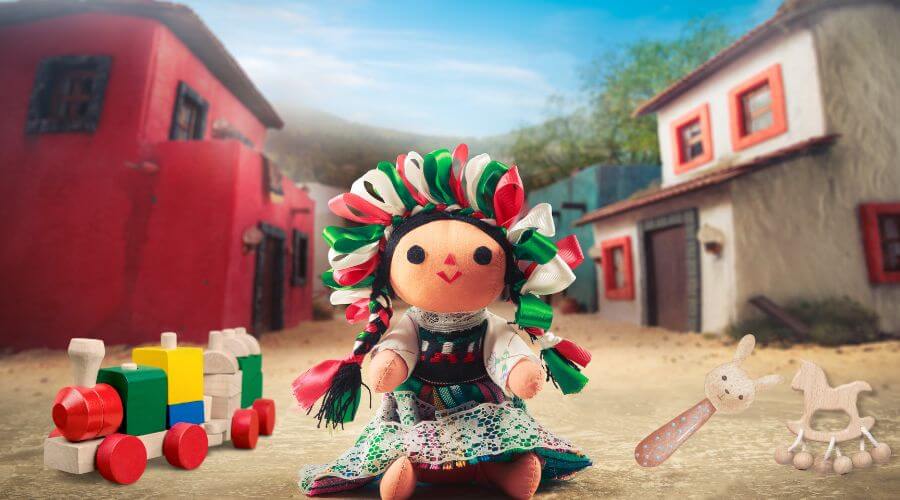
Manufacturing toys made from clay, wood, ivory, and other materials marked the beginning of the history of stuffed animals and dolls. The earliest wooden dolls were discovered in Egypt around the second millennium BC.
The ragdoll was historically the more direct ancestor of the plush animal. The first to fifth centuries is when the earliest rag doll was made. The Egypt Exploration Fund discovered this rag doll in Oxyrhynchus, Egypt. It is made of linen, filled with rags and papyrus, and adorned with colored wool. Currently, the doll is kept at the British Museum.
Rag Dolls gained acceptance across all social levels over time. The invention of fabric color printing around 1830 made producing soft, vibrant dolls in large quantities possible. Rag Dolls were utilized as educational tools and moving objects since they allowed young children to practice their craftsmanship while also helping them learn how to be loving. Children learned how to sew by fixing the dolls themselves, making easy alterations, and making clothes for them.
Teddy Bears’ Historical Context
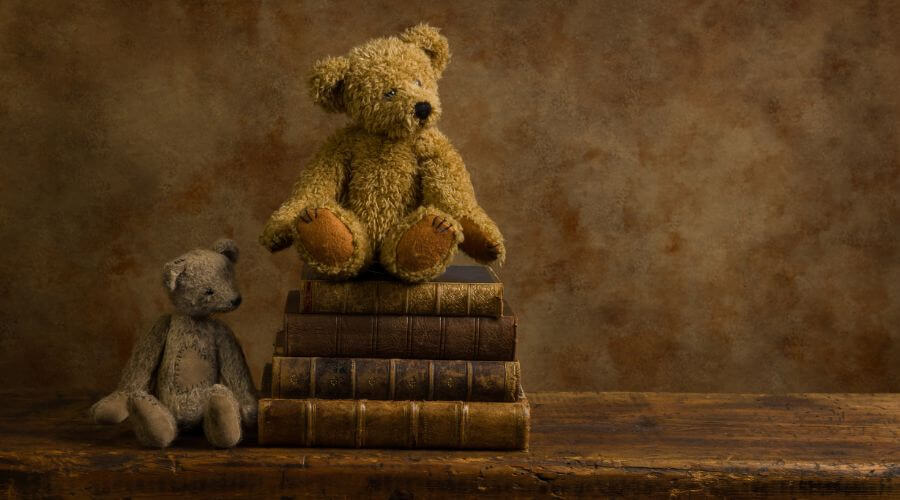
Nowadays, teddy bears are widely used. Each year, more than 50 million teddies are sold. But from where did it originate? In 1902, both businesses submitted patent applications for the teddy bear’s design. While the other created a toy that could communicate, the first designer began stuffing a plush animal.
Both businesses submitted patent applications for their designs in 1902. Both designers wanted to create a distinctive teddy bear, but they had different views about how to do it; one tried to make it soft and cuddly, while the other desired something tough and long-lasting.
How Was The Name of The Teddy Bear Derived?
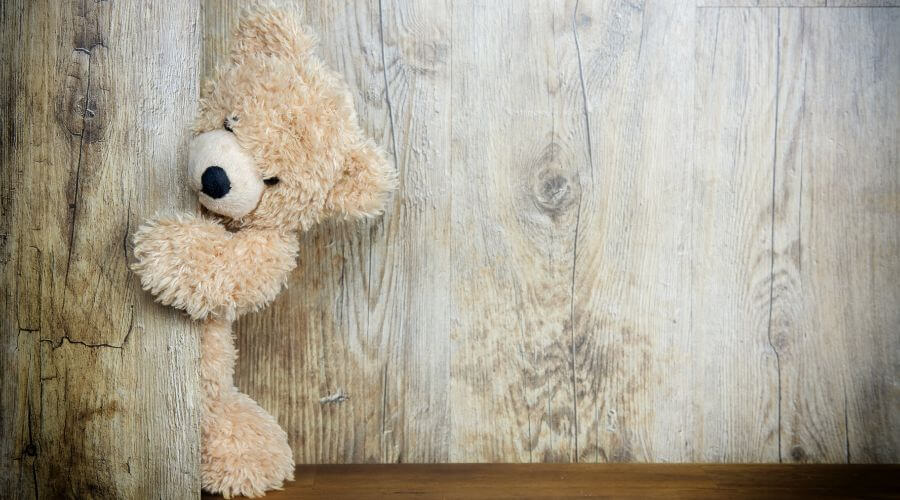
Teddy bears get their name from the way they look. These are adorable, plush, and squishy. But how did they play such a significant role in our early memories?
Teddy bears like this one initially featured stuffed cloth. Since kids often got dirty or wet, they needed frequent cleaning. To solve this, toy makers in the 19th century began using wool, creating what became known as “woolen teddies.”
In 1914, soldiers serving in World War I sent many of these teddy bears home. This increased demand led manufacturers to invent the “felt teddy bear,” which cost much less to produce.
However, the name “teddy” wasn’t commonly used for plush toys until the 1920s. By the 1930s, manufacturers began officially naming them.
Why Are They Still Called Teddies?
There isn’t a clear answer! Some believe the name comes from their cute and cuddly look, while others think it’s because they were often gifted to infants. Whatever the reason, teddy bears remain one of the most beloved stuffed animals today! 🧸💕
Whatever the reason, both children and adults still like teddy bears.
Influence on Culture, Marketing, and Collectors
One of the earliest types of playthings is the stuffed animal. These are frequently given to adults and children for important occasions like graduations, sicknesses, funerals, congrats, etc., as gifts, as well as for display or collection. In American Culture, stuffed animals are highly valued. Stuffed toy animals come in various varieties, such as dolls, plush toys, teddy bears, pajamas, ragdolls, and action figures.
Stuffed toys were estimated to have a $7.9 billion global market in 2018; this market is expected to rise over the following years. This number does not include plush toys and plushie figurines, which are becoming increasingly popular with young girls and are expanding quickly. Both online and offline retailers are selling these goods. While brick-and-mortar companies provide promotions and coupons, online stores offer free shipping and savings.
Some of the biggest producers of stuffed toys are based in the US. Hasbro Inc., Mattel, Tyco Toys, Fisher Price, VTech, and LEGO are a few examples of businesses. Some businesses produce licensed stuffed animals, such as those inspired by popular television and film franchises. Others create original designs. Although there are adult versions of these toys, many are also targeted at youngsters.
Ancient History Of Stuffed Animals
Ancient civilizations gave rise to plush toys. Toys were fashioned in ancient Egypt out of linen and stuffed with papyrus or other materials. These presents were typically in the form of dolls or animals and were given to kids.
Stuffed animals were also well-liked in China. People created stuffed animals from silk and other textiles during the Han Period (202 BCE–220 CE). These toys, frequently shaped like animals or fantastical creatures, were thought to bring good fortune.
Stuffed animals gained popularity in Europe during the 19th century. German toymaker Margarete Steiff developed the first mass-produced teddy bears in 1902. The name “teddy bear” came from President Theodore Roosevelt, who was famous for his love of hunting. After seeing a Washington Post cartoon depicting the President saving a bear cub’s life, Steiff decided to create a stuffed bear.
Plush toys were initially created using a range of materials. Straw, rags, or other cloth remnants created the earliest stuffed creatures. Manufacturers started employing fresh materials, such as cotton and wool, to make stuffed toys in the 19th century. These toys might be relatively pricey and were frequently handmade.
Plush toy sales decreased during World War I. Instead of producing plush animals, many toy manufacturers started making military toys. Yet, once the war was over, plush toy demand rose again. Stuffed animals gained popularity among both children and adults during the 1920s and 1930s thanks to the creation of numerous innovative designs.
The manufacture of plush toys grew more automated in the 1950s and 1960s. Stuffed animals were first created using synthetic fabrics, such as polyester, by toy manufacturers. This increased plush toy manufacture’s speed and efficiency while lowering their price.
BONUS: 8 Most Valuable Plushies in The World
-
- 8. Harlequin Teddy Bear
- Price realized: $74,500 (approx.)
- Production year: 1925
- Sale year: 2010
- Manufacturer: Steiff
About 1925, Steiff produced the half-red, half-blue teddy bear, Harlequin. It has black stitching, and yellow felt pads. While one eye is brown and dark, the other is blue.
A woman employee who spent over 40 years working for Steiff initially owned the toy. For the first five years of her career, she collaborated with Margarete Steiff, the company’s creator.
No one has discovered any other teddy bears with the same design. Experts believe the original owner may have created it as an experimental item.
Did You Realize?
In 1999, hedge fund manager Paul Greenwood bought this teddy bear at the Steiff Festival Auction. He owned an extensive collection of expensive teddy bears. After authorities found him guilty of fraud in 2010, Christie’s showroom held an auction to sell all of his soft toys.
7. Diamond Eye Teddy Bear
- Price realized: $84,000
- Production year: 2008
- Sale year: 2008
- Manufacturer: Steiff
The cost of this teddy bear is not determined by its historical worth, unlike Harlequin. Because of the materials used, it was pricey.
To celebrate the company’s 125th anniversary, Steiff created this extremely pricey limited edition Diamond Eye bear. The toy’s mouth was crafted from real 24-carat gold, and gold thread was used to make its fur.
It also possessed diamond-rimmed irises and emerald pupils for eyes. In addition to the teddy bear, a gift set included a Mont Blanc pet and an ink pot with liquid gold.
Did You Realize?
The upscale department shop Selfridges in London sold the diamond Eye teddy bear. This teddy bear served as the centerpiece of Selfridge’s toy area.
6. Steiff Rod Teddy Bear
- Price realized: $ 101,880
- Production year: 1904
- Sale year: 2002
- Manufacturer: Steiff Firm
Cord joints were a component of Steiff’s very first teddy bears. Rod Joints for limbs were first introduced by Steiff in 1904, when the company was in the second phase of developing teddy bears. That considerably strengthened the toys. Given that they are extremely rare and over a century old, these teddy bears fetch hefty prices at auctions.
At the 2002 Steiff festival in Giengen, Germany, a Steiff Rod teddy bear was purchased for 82,000 euros.
Did You Realize?
The oldest teddy bear to ever emerge in an auction was this Steiff Rod bear. Subsequently, a different specimen from this lot was sold for 25,000 pounds at a Christie’s auction.
5. Supreme x Louis Vuitton Teddy Bear
- Price realized: $106,016.08
- Production year: 2017
- Sale year: 2017
- Manufacturer: Louis Vuitton and Supreme
In 2017, designers created this one-of-a-kind, enormous teddy bear for the BBC’s Children in Need initiative. Louis Vuitton and Supreme recreated Pudsey Bear, the official mascot of the humanitarian event.
They crafted the 71 cm-long doll from high-quality denim and added a crimson bandana over one eye. The entire $106,016.08 sale price of the teddy bear went directly to the BBC Children in Need fund.
Did you Realize?
The BBC launched its humanitarian initiative Children in Need in 1980.
4. Steiff Titanic Mourning Bear
- Price realized: $131,937
- Production year: 1912
- Sale year: 2000
- Manufacturer: Steiff
Following the Titanic disaster in 1912, Steiff designed a unique, limited-edition black mohair teddy bear to serve as a sympathy gift. The company produced a total of 665 black bears in five different sizes.
Christie’s auction house in London sold one of these teddy bears for £91,750. The Puppenhaus doll museum in Basel, Switzerland, purchased it and added the 20-inch-long doll to its collection. The bear features a large nose, a humpback, black fur, and cream-colored paws.
The teddy bear’s first owner never liked it and kept it locked away in a cabinet her entire life. As a result, it was in perfect condition when it was offered for auction.
Did You Realize?
The Titanic teddy bear didn’t sell well when it was introduced to the London market because people disliked black fur.
3. Teddy Girl Bear
- Price realized: $143,000
- Production year: 1904
- Sale year: 1994
- Manufacturer: Steiff
Colonel Robert “Bob” Henderson spent his entire life with this cinnamon-colored, center-seam teddy bear with thick, curling mohair and black boot buttons for eyes. He received the bear as a present on the day of his birth, and he kept it until his passing in 1990.
Teddy Boy was the name given by Handerson. Even on the battlefields, when he was in the service, he would bring the bear along. After his daughter Cynthia was born, he gave her the toy. The teddy bear acquired the name Teddy Girl since Cynthia once dressed it in a frilly outfit for a woman.
The bear appeared in a Christie’s auction in 1994 and sold for a staggering £111,000 there. Yoshihiro Sekiguchi, the proprietor of the Izu Teddy Bear Museum in Japan, purchased it.
Did You Realize?
Teddy bears and how people feel about them have always been of great interest to Colonel Handerson. The bear has occupied a special place in folklore, myth, fairy tale, and mythology, according to Hander. Nowadays, it is clutched for stability and gripped as physical consolation in the shape of a teddy bear.
2. Happy Anniversary Teddy Bear
- Price realized: $ 152,334
- Production year: 1926
- Sale year: 2002
- Manufacturer: Steiff
The second most expensive teddy bear ever sold is the Happy Anniversary Teddy Bear, better known as “Happy.” Steiff created this teddy bear in 1926.
In 1989, Rosemary and Paul Vlopp purchased this teddy bear from London’s Sotheby’s Auction House. The couple had been married for 42 years.. They intended to spend between $5,000 and $10,000 on an anniversary present. They ultimately spent $86,000 on Happy, though. Happy continued to be the most expensive teddy bear for five years.
Vlopps relocated to Carson City, Nevada, from Buena Park, California, in 1996. They had about 5000 teddies in their collection at the time, and they got rid of about 1000 of them.
Happy was purchased for £ 101,556 in 2002 at the Steiff Festival in Giengen, Germany.
Did You Realize?
Happy and Vlopps used to travel to numerous teddy bear gatherings around the globe. The lecture fees would be waived, and the money would be given to charities. Happy reportedly raised at least $100,000 for children’s charities, according to Rosemary Vlopp.
1. Steiff Louis Vuitton Teddy Bear
- Price realized: $2,100,000
- Production year: 2002
- Sale year: 2002
- Manufacturer: Steiff
Steiff and Louis Vuitton collaborated to create the most costly teddy bear ever in 2002. The ideal toy if you have an extra 170K dollars.It contains gold fiber and mohair. The designers dressed the teddy bear in exquisite Louis Vuitton clothing with 24-carat gold accents. In addition, artisans used sapphire and diamonds to create its eyes.
This teddy bear entered the Guinness Book of World Records after buyers purchased it for an astounding $2,100,000 at an auction at Christie’s, Monaco. Jesse Kim, the Korean proprietor of the Teddy Bear Museum on Jeju Island, made the winning bid.
Did You Realize?
Kim Kardashian purchased a Louis Vuitton Teddy Bear for her third child in 2018 for $170,000.

